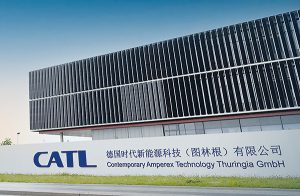The world’s biggest battery company is turning to abundantly available materials as it looks to upgrade power packs for electric vehicles. While that stands to bring down costs and raise efficiency as raw material
shortages abound, it’s an opportunity for countries like India and Brazil to take their chunk of the increasingly lucrative EV supply chain before it gets too late.
After effectively popularising safer and cheaper lithium iron phosphate, or LFP, chemistry for EV batteries, China’s Contemporary Amperex Technology Co is now adding manganese to the mix. Ford Motor Co recently added LFPs to its mix and will now import them from CATL for its Mustang Mach-E and F-150 Lightning pickup. This latest chemistry, LMFP, and promise to commercialise it, could be yet another game changer.
In its latest formulation, manganese will boost the energy density of LFPs, allowing them to take vehicles further along (while remaining the safer and cheaper
option.) In CATL’s case, the voltage will increase from 3.2 volts to 4.1 volts. Such chemistry could provide up to 25% more energy density, according to a subsidiary of Lithium Australia that has also been working to adjust its own manufacturing processes to boost battery performance.
CATL’s cells will be mass produced by the end of this year with a potential energy density of 230 Wh/kg, compared to 150Wh/kg to 180Wh/kg. That’s substantial given range anxiety and charging infrastructure
remain the biggest barriers to widespread consumer adoption.
Manganese — and its effectiveness in electrochemistry — is often forgotten because of its low cost as a portion of the whole battery compared to that of other metals like nickel and cobalt. It’s used in higher energy density batteries, or the nickel cobalt formulation but in smaller amounts than the other elements. Those powerpacks, while also popular and a favourite of South Korean manufacturers, have been involved in fires and aren’t considered as stable despite being able to take vehicles further.
Other combinations exist too, like the increasingly promising lithium nickel manganese oxide, or LNMO. In the past, one persistent issue with using manganese was that the battery would have a limited life cycle and high resistance, meaning it gets too hot and voltage drops. CATL’s version (and others) seem to have overcome this.
With this potential, demand for the metal is bound to go up. While there isn’t a shortage of manganese yet, it’ll be an important component for batteries.
—Bloomberg
 The Gulf Time Newspaper One of the finest business newspapers in the UAE brought to you by our professional writers and editors.
The Gulf Time Newspaper One of the finest business newspapers in the UAE brought to you by our professional writers and editors.
